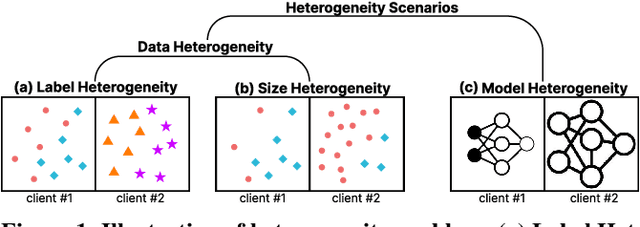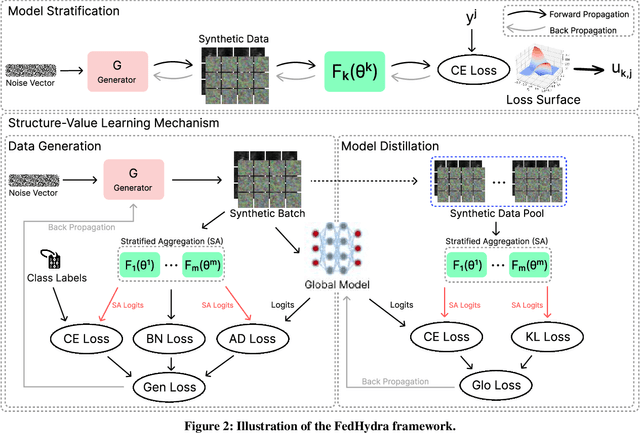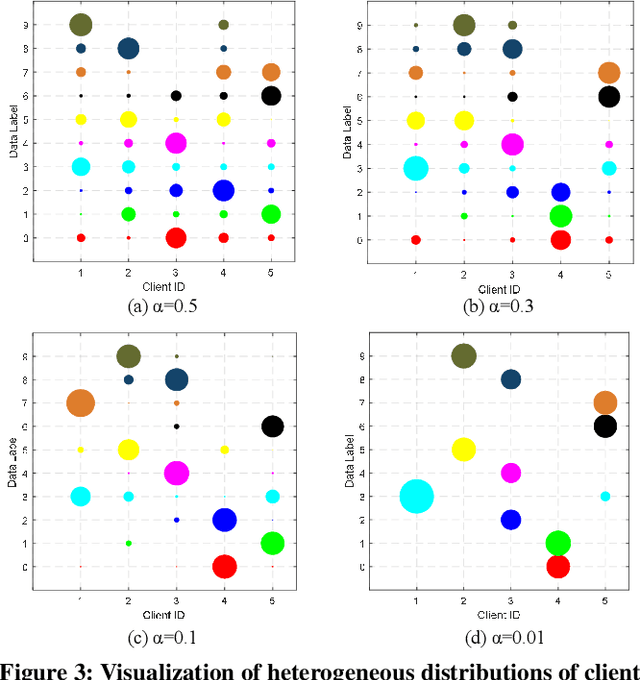Jun Bai
TongSearch-QR: Reinforced Query Reasoning for Retrieval
Jun 16, 2025Abstract:Traditional information retrieval (IR) methods excel at textual and semantic matching but struggle in reasoning-intensive retrieval tasks that require multi-hop inference or complex semantic understanding between queries and documents. One promising solution is to explicitly rewrite or augment queries using large language models (LLMs) to elicit reasoning-relevant content prior to retrieval. However, the widespread use of large-scale language models like GPT-4 or LLaMA3-70B remains impractical due to their high inference cost and limited deployability in real-world systems. In this work, we introduce TongSearch QR (Previously Known as "TongSearch Reasoner"), a family of small-scale language models for query reasoning and rewriting in reasoning-intensive retrieval. With a novel semi-rule-based reward function, we employ reinforcement learning approaches enabling smaller language models, e,g, Qwen2.5-7B-Instruct and Qwen2.5-1.5B-Instruct, to achieve query reasoning performance rivaling large-scale language models without their prohibitive inference costs. Experiment results on BRIGHT benchmark show that with BM25 as retrievers, both TongSearch QR-7B and TongSearch QR-1.5B models significantly outperform existing baselines, including prompt-based query reasoners and some latest dense retrievers trained for reasoning-intensive retrieval tasks, offering superior adaptability for real-world deployment.
FedMLAC: Mutual Learning Driven Heterogeneous Federated Audio Classification
Jun 11, 2025Abstract:Federated Learning (FL) provides a privacy-preserving paradigm for training audio classification (AC) models across distributed clients without sharing raw data. However, Federated Audio Classification (FedAC) faces three critical challenges that substantially hinder performance: data heterogeneity, model heterogeneity, and data poisoning. While prior works have attempted to address these issues, they are typically treated independently, lacking a unified and robust solution suited to real-world federated audio scenarios. To bridge this gap, we propose FedMLAC, a unified mutual learning framework designed to simultaneously tackle these challenges in FedAC. Specifically, FedMLAC introduces a dual-model architecture on each client, comprising a personalized local AC model and a lightweight, globally shared Plug-in model. Through bidirectional knowledge distillation, the Plug-in model enables global knowledge transfer while adapting to client-specific data distributions, thus supporting both generalization and personalization. To further enhance robustness against corrupted audio data, we develop a Layer-wise Pruning Aggregation (LPA) strategy that filters unreliable Plug-in model updates based on parameter deviations during server-side aggregation. Extensive experiments on four diverse audio classification benchmarks, spanning both speech and non-speech tasks, demonstrate that FedMLAC consistently outperforms existing state-of-the-art methods in terms of classification accuracy and robustness to noisy data.
Selecting Demonstrations for Many-Shot In-Context Learning via Gradient Matching
Jun 05, 2025Abstract:In-Context Learning (ICL) empowers Large Language Models (LLMs) for rapid task adaptation without Fine-Tuning (FT), but its reliance on demonstration selection remains a critical challenge. While many-shot ICL shows promising performance through scaled demonstrations, the selection method for many-shot demonstrations remains limited to random selection in existing work. Since the conventional instance-level retrieval is not suitable for many-shot scenarios, we hypothesize that the data requirements for in-context learning and fine-tuning are analogous. To this end, we introduce a novel gradient matching approach that selects demonstrations by aligning fine-tuning gradients between the entire training set of the target task and the selected examples, so as to approach the learning effect on the entire training set within the selected examples. Through gradient matching on relatively small models, e.g., Qwen2.5-3B or Llama3-8B, our method consistently outperforms random selection on larger LLMs from 4-shot to 128-shot scenarios across 9 diverse datasets. For instance, it surpasses random selection by 4% on Qwen2.5-72B and Llama3-70B, and by around 2% on 5 closed-source LLMs. This work unlocks more reliable and effective many-shot ICL, paving the way for its broader application.
Disentangling Preference Representation and Text Generation for Efficient Individual Preference Alignment
Dec 30, 2024Abstract:Aligning Large Language Models (LLMs) with general human preferences has been proved crucial in improving the interaction quality between LLMs and human. However, human values are inherently diverse among different individuals, making it insufficient to align LLMs solely with general preferences. To address this, personalizing LLMs according to individual feedback emerges as a promising solution. Nonetheless, this approach presents challenges in terms of the efficiency of alignment algorithms. In this work, we introduce a flexible paradigm for individual preference alignment. Our method fundamentally improves efficiency by disentangling preference representation from text generation in LLMs. We validate our approach across multiple text generation tasks and demonstrate that it can produce aligned quality as well as or better than PEFT-based methods, while reducing additional training time for each new individual preference by $80\%$ to $90\%$ in comparison with them.
E(3)-invariant diffusion model for pocket-aware peptide generation
Oct 31, 2024



Abstract:Biologists frequently desire protein inhibitors for a variety of reasons, including use as research tools for understanding biological processes and application to societal problems in agriculture, healthcare, etc. Immunotherapy, for instance, relies on immune checkpoint inhibitors to block checkpoint proteins, preventing their binding with partner proteins and boosting immune cell function against abnormal cells. Inhibitor discovery has long been a tedious process, which in recent years has been accelerated by computational approaches. Advances in artificial intelligence now provide an opportunity to make inhibitor discovery smarter than ever before. While extensive research has been conducted on computer-aided inhibitor discovery, it has mainly focused on either sequence-to-structure mapping, reverse mapping, or bio-activity prediction, making it unrealistic for biologists to utilize such tools. Instead, our work proposes a new method of computer-assisted inhibitor discovery: de novo pocket-aware peptide structure and sequence generation network. Our approach consists of two sequential diffusion models for end-to-end structure generation and sequence prediction. By leveraging angle and dihedral relationships between backbone atoms, we ensure an E(3)-invariant representation of peptide structures. Our results demonstrate that our method achieves comparable performance to state-of-the-art models, highlighting its potential in pocket-aware peptide design. This work offers a new approach for precise drug discovery using receptor-specific peptide generation.
A Unified Solution to Diverse Heterogeneities in One-shot Federated Learning
Oct 28, 2024



Abstract:One-shot federated learning (FL) limits the communication between the server and clients to a single round, which largely decreases the privacy leakage risks in traditional FLs requiring multiple communications. However, we find existing one-shot FL frameworks are vulnerable to distributional heterogeneity due to their insufficient focus on data heterogeneity while concentrating predominantly on model heterogeneity. Filling this gap, we propose a unified, data-free, one-shot federated learning framework (FedHydra) that can effectively address both model and data heterogeneity. Rather than applying existing value-only learning mechanisms, a structure-value learning mechanism is proposed in FedHydra. Specifically, a new stratified learning structure is proposed to cover data heterogeneity, and the value of each item during computation reflects model heterogeneity. By this design, the data and model heterogeneity issues are simultaneously monitored from different aspects during learning. Consequently, FedHydra can effectively mitigate both issues by minimizing their inherent conflicts. We compared FedHydra with three SOTA baselines on four benchmark datasets. Experimental results show that our method outperforms the previous one-shot FL methods in both homogeneous and heterogeneous settings.
E(3)-invaraint diffusion model for pocket-aware peptide generation
Oct 27, 2024



Abstract:Biologists frequently desire protein inhibitors for a variety of reasons, including use as research tools for understanding biological processes and application to societal problems in agriculture, healthcare, etc. Immunotherapy, for instance, relies on immune checkpoint inhibitors to block checkpoint proteins, preventing their binding with partner proteins and boosting immune cell function against abnormal cells. Inhibitor discovery has long been a tedious process, which in recent years has been accelerated by computational approaches. Advances in artificial intelligence now provide an opportunity to make inhibitor discovery smarter than ever before. While extensive research has been conducted on computer-aided inhibitor discovery, it has mainly focused on either sequence-to-structure mapping, reverse mapping, or bio-activity prediction, making it unrealistic for biologists to utilize such tools. Instead, our work proposes a new method of computer-assisted inhibitor discovery: de novo pocket-aware peptide structure and sequence generation network. Our approach consists of two sequential diffusion models for end-to-end structure generation and sequence prediction. By leveraging angle and dihedral relationships between backbone atoms, we ensure an E(3)-invariant representation of peptide structures. Our results demonstrate that our method achieves comparable performance to state-of-the-art models, highlighting its potential in pocket-aware peptide design. This work offers a new approach for precise drug discovery using receptor-specific peptide generation.
Leveraging Estimated Transferability Over Human Intuition for Model Selection in Text Ranking
Sep 24, 2024



Abstract:Text ranking has witnessed significant advancements, attributed to the utilization of dual-encoder enhanced by Pre-trained Language Models (PLMs). Given the proliferation of available PLMs, selecting the most effective one for a given dataset has become a non-trivial challenge. As a promising alternative to human intuition and brute-force fine-tuning, Transferability Estimation (TE) has emerged as an effective approach to model selection. However, current TE methods are primarily designed for classification tasks, and their estimated transferability may not align well with the objectives of text ranking. To address this challenge, we propose to compute the expected rank as transferability, explicitly reflecting the model's ranking capability. Furthermore, to mitigate anisotropy and incorporate training dynamics, we adaptively scale isotropic sentence embeddings to yield an accurate expected rank score. Our resulting method, Adaptive Ranking Transferability (AiRTran), can effectively capture subtle differences between models. On challenging model selection scenarios across various text ranking datasets, it demonstrates significant improvements over previous classification-oriented TE methods, human intuition, and ChatGPT with minor time consumption.
Uncovering the Mechanism of Hepatotoxiciy of PFAS Targeting L-FABP Using GCN and Computational Modeling
Sep 16, 2024Abstract:Per- and polyfluoroalkyl substances (PFAS) are persistent environmental pollutants with known toxicity and bioaccumulation issues. Their widespread industrial use and resistance to degradation have led to global environmental contamination and significant health concerns. While a minority of PFAS have been extensively studied, the toxicity of many PFAS remains poorly understood due to limited direct toxicological data. This study advances the predictive modeling of PFAS toxicity by combining semi-supervised graph convolutional networks (GCNs) with molecular descriptors and fingerprints. We propose a novel approach to enhance the prediction of PFAS binding affinities by isolating molecular fingerprints to construct graphs where then descriptors are set as the node features. This approach specifically captures the structural, physicochemical, and topological features of PFAS without overfitting due to an abundance of features. Unsupervised clustering then identifies representative compounds for detailed binding studies. Our results provide a more accurate ability to estimate PFAS hepatotoxicity to provide guidance in chemical discovery of new PFAS and the development of new safety regulations.
Exploring Latent Space for Generating Peptide Analogs Using Protein Language Models
Aug 15, 2024Abstract:Generating peptides with desired properties is crucial for drug discovery and biotechnology. Traditional sequence-based and structure-based methods often require extensive datasets, which limits their effectiveness. In this study, we proposed a novel method that utilized autoencoder shaped models to explore the protein embedding space, and generate novel peptide analogs by leveraging protein language models. The proposed method requires only a single sequence of interest, avoiding the need for large datasets. Our results show significant improvements over baseline models in similarity indicators of peptide structures, descriptors and bioactivities. The proposed method validated through Molecular Dynamics simulations on TIGIT inhibitors, demonstrates that our method produces peptide analogs with similar yet distinct properties, highlighting its potential to enhance peptide screening processes.
 Add to Chrome
Add to Chrome Add to Firefox
Add to Firefox Add to Edge
Add to Edge